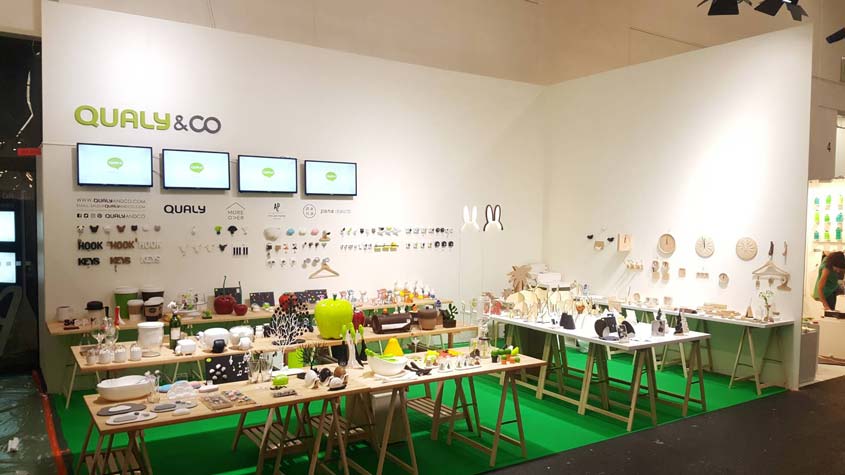WIPO Magazine welcomes letters commenting on issues raised in Magazine articles, or on other developments in the field of intellectual property.
Letters should be marked "for publication in the WIPO Magazine" and addressed to The Editor at WipoMagazine@wipo.int or to the postal/fax address on the back cover of the Magazine. Please also include your postal address. We regret that it is not possible to publish all the letters we receive. The editor reserves the right to edit, shorten, or publish extracts from letters. The author will be consulted if substantial editing is required.
IP system isn’t working for small designers

"Sooner or later, most of us are obliged to give up the struggle to protect our designs." (Courtesy of P.Hughes)
As a lecturer in three dimensional design, I am in contact with many product designers and design students who have found that the IP system is just too expensive and unwieldy to protect the interests of budding designers. Without the substantial resources needed to pay patent agents and to file patents or design registrations nationally and internationally, designers are discouraged from undertaking lengthy development work and exposing their creations to the market. They are too aware that large manufacturers can copy their designs, and with a few minor amendments, market these innovations as their own.
It is those innovators who are not attached to large commercial concerns who suffer most. Consider the design student or independent designer who has an innovative idea or design. They must finance the development of their project and the launch of the product, or spend a considerable amount of time taking the product around to manufacturers. This takes up time they would otherwise spend on paid work. The addition of agents’ fees, searches and applications fees in different countries is a further burden that acts to deter the pursuit of their ideas and inventions. Even if they succeed, they face the prospect of having to spend large additional sums to fight any infringement of their patent. Sooner or later, as was my own experience, most have to give up the struggle.
Certainly there are success stories. But under the current IP system, large number of small businesses and individual designers will continue to be deterred from bringing to market new innovations and ideas – to the detriment of the wider community.
From Philip Hughes, Senior Lecturer in Three Dimensional Design, The Arts Institute at Bournemouth, UK
______________
Patents and gender
Your article on the Global Women Inventors & Innovators Network (GWIIN: Championing Women in Mexico and Beyond, August 2006) asked: "with ever more women achieving success … might not organizations promoting women inventors have almost outlived their need?" The article went on to demonstrate that in Mexico women still file far fewer patent applications than men. But what happens in other countries?
I would like to draw your attention to the recent research on gender differences in patenting in the U.S., published in the August 4 edition of Science Magazine*. A random sample of 4,227 life scientists showed that, over a 30-year period, male scientists generated nearly 14 times as many patents as their female colleagues. After accounting for substantial and complex effects of a range of factors, the research team concluded that there is a "statistically significant effect of being female" and that women Ph.D life scientists patent at 40 percent of the rate of their male counterparts – although the trend for younger female life scientists is slightly more encouraging. (*Study by Professor Waverly Ding, University of California, Fiona Murray, MIT and Tony E. Stuart, Harvard Business School.)
So much untapped potential!
I welcome this research, as there is currently so little data available on the effects of gender in patenting and invention – and even less on the possible reasons for disparity between men and women. Meanwhile, organizations such as GWIIN respond to what is clearly an on-going need for positive, gender-related actions to be developed across the globe.
From Ann Reynard, EU Projects Consultancy and GWIIN Member
___________
Protecting image rights
The article Using Photographs of Copyrighted Works, April 2006 does not mention the related area of using photographs of people – a subject which gives frequent rise to confusion.
National laws differ. But your readers may be interested in some recent Chilean case law, according to which a claim for protection of a person’s image used without consent is admissible if the image is clearly recognizable and is used for profitable purposes, regardless of whether the photograph was taken in a public place.
The recognizability requirement was established in a case in which an individual filed a claim against a newspaper for publishing his photograph without consent in an article on obesity in Chile. The court rejected the claim since it proved not possible to identify beyond doubt the claimant from the photograph.
Regarding the display of a person’s image for advertising or profit, the tennis player Fernando González filed a successful claim against a media company for using his image in an advertising campaign without his consent. In the ruling, the court stated that body image is one of a person’s attributes, and that it is therefore that person’s own prerogative to use or reproduce the image for the purposes of advertising or profit.
In a third case, a newspaper published a photograph of a holiday-maker on a public beach without her consent, arguing that the photograph had been taken in "a crowded public place" and had served purely to "pay tribute once again to the renowned beauty of Chilean women". The ruling stressed that the act of appearing in a public place cannot be presumed to mean that consent has been given for the widespread public dissemination of this act. This embodies the very essence of the right to privacy guaranteed by the Political Constitution.
From Carmen Paz Alvarez, Sargent & Krahn, Chile

